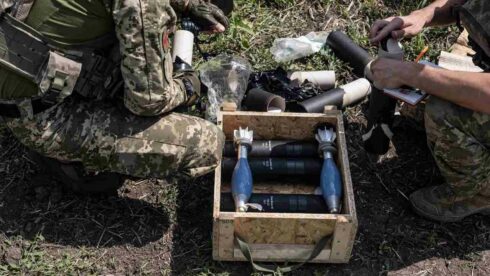Written by Ahmed Adel, Cairo-based geopolitics and political economy researcher
Despite the sanctions, the production of ammunition for artillery in Russia exceeds that of the West in quantity and cost. CNN reported that Western countries could not produce the amount of artillery ammunition needed for Kiev to prolong its futile war effort against Russia. This exposes that the West, and not Russia, has suffered from production, stocks, and logistics involved in the war effort.
“But nearly 18 months in, a significant gap still remains between the shells Ukraine wants and how fast European and American factories can supply them. And concerns are rising that Europe’s patchwork of arms manufacturers is ill-suited to meet these needs,” CNN reported on September 17.
However, despite sweeping sanctions, Moscow is creating artillery munitions much faster than the West, says CNN. It details that Russia produces seven times more ammunition and eight times the West’s speed.
Tuuli Duneton, a senior Estonian defence official who helped engineer the EU’s plan to increase production, admitted that the goal of producing 1 million shells for Kiev in 12 months was “ambition combined with pragmatism” due to hesitation among many member states to back a more demanding goal.
Furthermore, unlike Russia, Western countries have not yet learned to produce cheap, standardised projectiles on a large scale, despite increasing manufacturing levels, the broadcaster writes.
“While European defence officials remain cautiously optimistic of the prospects for the EU’s plans for long-term production boosts, there’s a very rigid ceiling on how quickly much-needed shells can reach Ukraine’s troops,” CNN reported. “That’s a harsh reality for the Ukrainians to endure, especially as criticisms swell over the slow counteroffensive.”
It is remembered that Mikhail Mishustin, Prime Minister of Russia, announced on July 10 that Russia’s military-industrial complex is working at its maximum capacity, with a several-fold increase in production, while weapons and equipment are being improved.
The damning report comes as a NATO official warned Reuters on September 16 that a drastic increase in ammunition prices means that increased defence spending by allies does not automatically translate into greater security.
“Prices for equipment and ammunition are shooting up. Right now, we are paying more and more for exactly the same,” Dutch Admiral Rob Bauer, the chair of NATO’s military committee, said on September 16 after a meeting of the alliance’s chiefs of defence in Oslo. “That means that we cannot make sure that the increased defence spending actually leads to more security.”
Bauer advocated for more private investment in the defence sector to increase production capacity, calling on pension funds and banks to stop labelling defence investments as unethical.
“Long term stability needs to prevail over short term profits. As we have seen in Ukraine, war is a whole of society event,” he said, adding, “Forty percent of the (Ukrainian) economy evaporated in the first days of the war, that was private money to a large extent, that money is gone.”
The Dutch Admiral thus pressured business leaders to accelerate the expansion of production capacity, especially amid Kiev’s difficulties in advancing against Moscow’s forces.
Adding to the damning news was the head of the Norwegian Armed Forces, General Eirik Kristoffersen, who said on September 14 that NATO ammunition stocks are dangerously low, with demand outstripping supply.
The Norwegian general also stated that he sees “no immediate solution in Ukraine” and that the timing “is working for Russia” because Moscow “has more people, can produce more material and has a larger air force than Ukraine.”
“If Russia’s objective is a frozen conflict, which I think they can be satisfied with now, then time will be on their side,” Kristoffersen was quoted as saying by Klassekampen newspaper.
NATO and its allies began sending weapons and ammunition to Ukraine shortly after Russia launched its military operation in February 2022. According to former Ukrainian Defence Minister Oleksiy Reznikov’s interview on September 3, Kiev has received about $100 billion in military aid from Western backers. Yet, despite this mind-blowing amount, Ukraine has catastrophically failed in its much-lauded counteroffensive, losing tens of thousands of soldiers and nearly all the weapons provided by the West.
The Ukrainian counteroffensive did not achieve its objectives and resulted in Ukraine losing over 71,500 troops, 543 tanks and 18,000 armoured vehicles of various classes. It is recalled that all early predictions from the West were that Russia did not have the means and capabilities to continue the war for long or meet supply demands. Yet, in only a year and a half, Russia exposed that the West had major fragilities in production, stock and logistics. This has now culminated with Western media also acknowledging that it is the West, and not Russia, suffering to meet the demands of the war.






